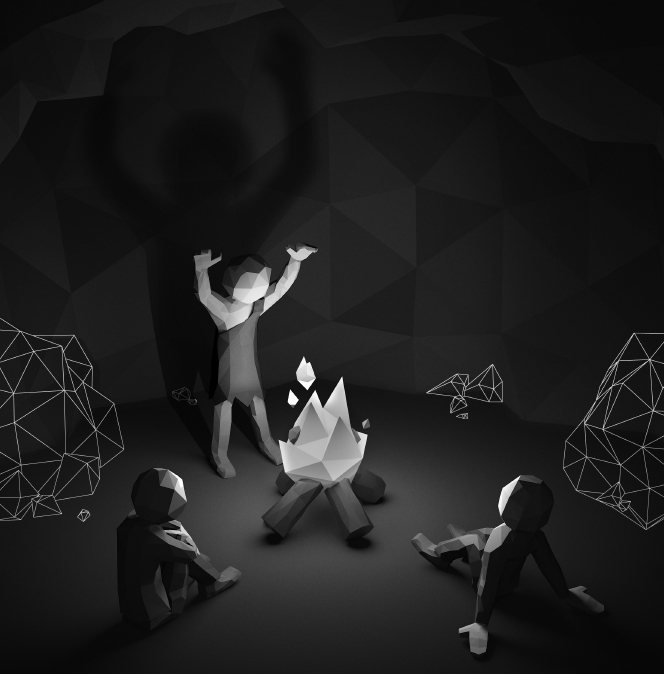
CHAPTER 01
FROM THE CAMPFIRE
Making Sense of the World through Story
Humans have an innate ability to take disparate events and connect them together to create meaning. This is how we understand the workings and threads of the world. A quick peek into prehistoric archaeology reveals that this is how we’ve pretty much always done it. In 2012, a team of archaeologists from the University of Bristol studied 11 subterranean caves located along Spain’s Cantabrian Coast. In one of those caves, El Castillo,1 they discovered the remains of the earliest-known cave paintings.2 They are a million years old. An unrelated archaeological discovery, this one in Wonderwerk Cave in South Africa, has recently unearthed findings of the earliest solid evidence that our ancient human forebears were using fire. That’s right, the first known campfire, which also dates back to a million years ago. From these discoveries, it is surmised that cavemen and cavewomen gathered together seeking to share experiences and to narrate and record their stories as much as they gathered for the physical warmth of the campfire.
Today, the early origins of those campfire scenes are often used as the obvious illustration of the history and communal value of storytelling. Although that illustration may be helpful, we believe the caveman himself and the origin of language is the more appropriate example to illustrate the ...
Get Storyscaping: Stop Creating Ads, Start Creating Worlds now with the O’Reilly learning platform.
O’Reilly members experience books, live events, courses curated by job role, and more from O’Reilly and nearly 200 top publishers.

